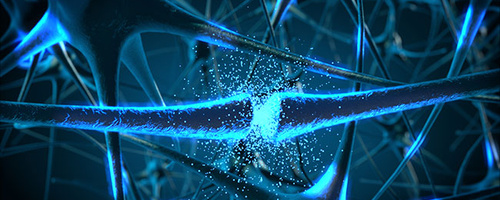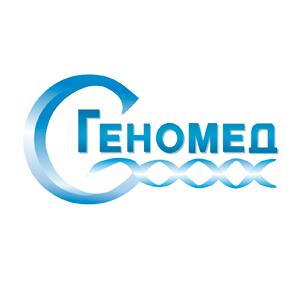International School
Center for Genome Technology and Bioinformatics and Research center for molecular mechanism of aging and age-related diseases, Landau Phystech-School of Physics & Research of the Moscow Institute of Physics and Technology (MIPT) invites you to take part in the International school for young scientists "Molecular mechanisms of neurodegenerative diseases", which will be held on November 26, 2020 online.
The school is focused on the study of membrane proteins associated with the pathogenesis of neurodegenerative diseases: methods to study the structure and features of molecular mechanisms of functioning.
We will discuss:
- Molecular insights on mechanisms of neurodegenerative diseases – Alzheimer’s and Parkinson’s diseases;
- Intracellular biophysical processes involved in neurodegenerative diseases;
- Amyloid precursor protein and it’s role in pathogenesis of neurodegenerative diseases;
- Developing of promising medicines, particularly D-enantiomeric peptides influencing protein oligomerization;
- Structural investigations of amyloidogenic and intrinsically disordered proteins;
Thanks for supporting this event:
This event will be held online!
Participation is FREE, the number of participants is limited. Register NowSchool Schedule
November 26, 2020
Moscow time (+0 hrs)
Israel time (-1 hr): Tel-Aviv
Europe time (-2 hrs): Dusseldorf, Gothenburg, Munich
GMT (-3 hrs): London, Cambridge
U.S. Eastern Standard Time (-8 hrs): New York, Tampa (FL)

Prof. Dr. Roman Efremov / Shemyakin-Ovchinnikov Institute of Bioorganic Chemistry of the Russian Academy of Sciences, Moscow, Russia
"Dynamic “Molecular portraits” of proteins and cell membranes: a computational view"
Molecular surfaces are the key players in processes of bimolecular recognition, interaction, and signaling. Nowadays, state of the art methods exist for visualizing molecule surface and surface distributed properties in three-dimensional space and in time – the so-called “dynamic molecular portraits” (DMP). Here, we present a number of original in silico methods to map and process multivariate surface properties of biomolecules and their assemblies – proteins, membranes, and so on. These techniques were shown to improve protein-ligand and protein-protein docking results, permit pictorial visualization of the whole protein surface in terms of 2D ”Earth maps”. Implementation of the DMP technologies, along with complementary experimental and computational methods, is capable of rational design of new physiologically important compounds with predefined activities.

Prof. Dr. Andrey Abramov / UCL Queen Square Institute of Neurology, London, United Kingdom
"Mechanism of neuronal excitability and cell fate in frontotemporal dementia"
Dementia is currently one of the biggest threats for society. In frontotemporal dementia (FTD) as in number of other neurodegenerative disorders, a prominent pathological mark is the aggregation of the microtubule-associated protein tau. Moreover, mutations in the MAPT gene that encodes tau cause FTD.
We found that human iPSC-derived cortical neurons with the FTD-related MAPT 10+16 mutation present glutamate-induced excitability mediated by NMDA and AMPA receptors. Extracellular tau exerts the same impairment in healthy iPSC-neurons and primary neuronal cultures. Mitochondrial antioxidants completely restore the altered glutamate-induced calcium transients in all the neuronal models tested and prevent the neuronal death produced by glutamate excitotoxicity. Redox proteomics data suggest that mitochondrial ROS alter proteins involved in trafficking of glutamate receptors but not AMPA and NMDA receptors directly. These results strongly suggest a role for mitochondrial ROS in the regulation of the glutamatergic signalling in FTD.

Prof. Dr. Sergey Kozin / Engelhardt Institute of Molecular Biology, Russian Academy of Sciences, Moscow, Russia
"Translational medicine approaches to curing Alzheimer’s disease"
Scientific advances in the study of molecular factors of onset and progression of Alzheimer’s disease have ledto the creation of several concepts for the pathogenesis of this most common neurodegenerative disease in theworld, of which amyloid, cholinergic and neuroinflammatory hypotheses are leading. Over the past twenty years, hundreds of drug prototypes have been developed using these hypotheses, but none of them proved tobe effective in clinical trials as a disease modifying agent. Based on the latest experimental dataon the structural and functional properties of chemically modified amyloid-beta isoforms, the concept of theorigin and mechanism of action of amyloid-beta with the isomerized Asp7 residue as a molecular agent ofAlzheimer’s disease pathogenesis is presented. This concept allows not only to combine the most importantaspects of existing hypotheses, but also points to ways of creating a disease modifying therapy for Alzheimer’s disease with a principally new mechanism of action.

Prof. Dr. Nir Ben-Tal / Tel Aviv University George S. Wise Faculty of Life Sciences, Tel Aviv-Yafo, Israel
"Transport determinants in cation/proton antiporters: phylogenetic analysis and simulations guide experiments"
Cation/proton antiporters (CPAs) critically contribute to cell homeostasis. With over 100,000 entries in UniProt, they comprise a large superfamily, including 13 paralogues in humans. Thus, the CPAs phylogeny, while complex and challenging to reconstruct, can be very informative, for example for deciphering the molecular determinants of specificity among these antiporters. CPAs are divided into two functional groups, electroneutral and electrogenic antiporters, exchanging one or two protons per one cation (Na+ or K+), respectively. They are also divided into two phylogenetic groups, CPA1 and CPA2, which have been suggested to respectively correlate with the two electrogenicity phenotypes. However, such a correlation has not been established, and the mechanistic underpinnings of the electrogenicity and cation selectivity are still unclear. The first part of the talk will present a phylogenetic analysis of a representative set of 6,597 antiporters [Masrati et al Nature Communs 2018, PMID: 30310075]. A well-defined, eight-residue sequence motif, was defined, which distinguishes CPA1s from CPA2s and seems to determine both their electrogenicity and cation selectivity. The analysis provides a new way to classify CPAs, and shows that contrary to previous suggestions, the CPA1/CPA2 division only partially correlates with the electrogenicity of the antiporters. We were able to identify specificity determining residues in this seemingly redundant family, which enabled us, based on predictions, to modify CPAs function. As a strong support of our findings, we successfully used mutagenesis to recover transport activity in an inactive mutant of the electrogenic CPA2 antiporter EcNhaA. This variant was originally designed to make EcNhaA electroneutral, but was inactive. We rationally designed two compensatory mutations that recovered activity, and showed that the resulting EcNhaA triple mutant became electroneutral, as it was meant to be. In the second part of the talk we will explore the transport mechanism [Masrati et al. PNAS, Accepted for publication]. We now know the structure of a handful of CPAs, including both an inward-facing (IF) conformation and an outward-facing (OF) conformation of NapA from Thermus thermophilus (TtNapA). However, we still do not have a clear understanding of their transport mechanism in atomic detail. In particular, how do they alternate between the IF and OF conformations? Two different mechanisms have been suggested: the rocking bundle vs. the elevator. Structurally, CPAs comprise a core domain and a dimerization domain, which differ in their mutual interactions between the IF vs OF conformations. According to the rocking bundle mechanism, the transition between the IF and OF conformations mostly involves a rotation motion of the core domain with respect to the dimerization domain. According to the elevator mechanism, in contrast, the transition mostly involves vertical translation of the core domain relative to the interface domain. Our all-atom molecular dynamics simulations of TtNapA, within the metadynamics framework, show that TtNapA’s conformational changes are driven predominantly by the rotation, and that translation just follows, in support of the rocking bundle mechanism. We then turn to another CPA of known structure: Escherichia coli NhaA (EcNhaA). The EcNhaA structure, in the IF conformation, was the first CPA structure to be determined (in 2005), and yet, in spite of years of effort, we still do not know the structure of an OF conformation. Thus, we conduct metadynamics simulations of ECNhaA starting from the known IF conformation, where we bias the rotation angle, and observe what the OF conformation could be. Next we designed cross-linking mutations to trap this putative conformation. Reassuringly, our experiments, using growth assays and pH assays in everted membrane vesicles, showed that in oxidizing conditions the cross-linked transporter became inactive, and that it regained activity upon reducing, when the cross-link was detached, as it should.

Prof. Dr. Dieter Langosch / Technical University of Munich, Munich, Germany
"The conformational flexibility of substrate transmembrane helices in intramembrane proteolysis"
Intramembrane proteases, such as gamma-secretase, typically cleave a range of different and unrelated substrates. Since these substrates do not exhibit obvious sequence homologies around their cleavage sites within their transmembrane domains, it is presently unclear how an intramembrane protease distinguishes substrates from non-substrates. In one view, substrate transmembrane helices display specific patterns of conformational flexibility, like helix bending, that qualify them as cleavable. Here, we will discuss data testing this hypothesis bases on mass-spectrometry-based hydrogen-deuterium exchange analyses.

Prof. Dr. Vladislav Orekhov / Göteborgs Universitet, Gothenburg, Sweden
"Multidimensional NMR in studies of challenging protein systems"
A single NMR experiment may allow to simultaneously observe and quantify signals from hundreds of individual atoms in a large molecular system such as protein complexes provided that the signals are resolved, i.e. have unique positions in the spectrum. A natural way to increase spectral resolution is to spread the peaks in more than one dimensions. Modern NMR offers experiments and analysis tools to handle spectra with up to seven (for now) dimensions. The approach will be exemplified on several challenging and medically important systems including 283-residue integral human membrane protein VDAC-1, Aβ (1-42) tetramer and octamer structures in membrane, globular 723-residue enzyme malate synthase G, and intrinsically disordered protein 441-residue Tau.

Prof. Dr. Dieter Willbold / Forschungszentrum Jülich, Heinrich-Heine-Universität Düsseldorf, Germany
"Truly disruptive anti-prionic treatment of Alzheimer’s disease"
It is well accepted that neurodegenerative diseases including Alzheimer´s disease are mainly driven by protein misfolding events. While having a normal (and important) physiological role in their native, monomeric conformation, certain peptides or proteins can misfold and form oligomeric aggregates, which gain toxic properties and drive down-stream events, like Tau pathology, neuronal damage, and cognitive decline. Such toxic oligomers can grow by constantly recruiting more monomers, replicate and propagate prion-like throughout the brain. Also, Aβ oligomers behave prion-like. The optimal intervention strategy for any of the diseases that are caused and driven by such prions would directly disrupt and disassemble prions into their native monomeric building blocks thereby destroying the etiologic agent of the respective disease. We have found a way to effectively destroy such Aβ oligomers by using a novel class of active pharmaceutical compounds called all-D-peptides, that are orally available, non-immunogenic and cross the blood brain barrier. The clinical-stage all-D-peptide PRI-002, was specifically designed to destabilize, disassemble and, ultimately, destroy Aβ oligomers by stabilizing its non-toxic and native monomeric counterpart. This new and unique anti-prionic mode of action is currently expanded to other compounds targeting Tau and alpha-synuclein. PRI-002 (alias “RD2” in publications) is blood-brain-barrier penetrable and has demonstrated target engagement in vitro and in vivo. Treatments in three different transgenic mouse models in three different laboratories yielded improved cognition and deceleration of neurodegeneration. Oral treatment of old-aged transgenic AD mice with full blown pathology reversed cognitive and behavioral deficits to levels indistinguishable from healthy wild-types. The in vivo correlation of Aβ oligomer elimination and reversal of deficits in these old mice supports a promising role of Aβ oligomer prions as the target for causal treatment of AD. PRI-002 has entered clinical development and has proven to be safe and tolerable in humans.
The study was supported by a grant of Russian Science Foundation (RSF project No. 20-64-46027).

Prof. Dr. Vladimir Uversky / University of South Florida, Tampa, USA
"Intrinsically disordered proteins and their roles in neurodegeneration"
Intrinsically disordered proteins (IDPs) lack stable tertiary and/or secondary structure under physiological conditions in vitro. IDPs are characterized by sequential, structural, and spatiotemporal heterogeneity. They are highly abundant in nature and have functions that are complementary to functions of ordered proteins. Various proteinaceous membrane-less organelles (PMLOs) almost invariantly contain IDPs, suggesting that the formation of these phase-separated droplets is crucially dependent on intrinsic disorder. Misbehavior of IDPs is associated with the pathogenesis of various human maladies, including neurodegenerative diseases.

Dr. Lothar Gremer / Forschungszentrum Jülich, Germany
"Biophysics on Amyloid-beta/Prion Protein Interaction"
It is well accepted that neurodegenerative diseases including Alzheimer´s disease are mainly driven by protein misfolding events. While having a normal (and important) physiological role in their native, monomeric conformation, certain peptides or proteins can misfold and form oligomeric aggregates, which gain toxic properties and drive down-stream events, like Tau pathology, neuronal damage, and cognitive decline. Such toxic oligomers can grow by constantly recruiting more monomers, replicate and propagate prion-like throughout the brain. Also, Aβ oligomers behave prion-like, as well as prion protein (PrP). Here we present results of biophysical characterization of Abeta oligomers and PrP.
The study was supported by a grant of Russian Science Foundation (RSF project No. 20-64-46027).















